KDD Cup 2013 Track 1 - Author - Paper Identification challenge (2nd place team)
Download as PPTX, PDF2 likes1,469 views
We describe our approach for solution of Author - Paper Identification Challenge: https://www.kaggle.com/c/kdd-cup-2013-author-paper-identification-challenge
1 of 12
Downloaded 22 times
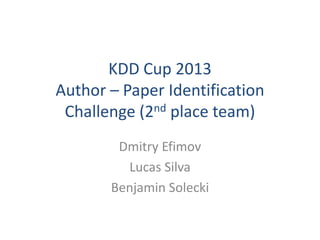











Recommended
Lisp Machine Prunciples



Lisp Machine PrunciplesVsevolod Dyomkin
╠²
This document provides an overview of Lisp Machines and the Genera operating system. It discusses that Lisp Machines had specialized hardware for Lisp data types and features like garbage collection to optimize for Lisp. It also describes that Genera had an open, extensible architecture with data-level integration where all code and data existed in a single shared memory space. Key concepts of Genera included extensibility, reusability, and transparency where the entire system was inspectable and modifiable.Can functional programming be liberated from static typing?



Can functional programming be liberated from static typing?Vsevolod Dyomkin
╠²
- Discussed programming paradigms
- Defined functional programming
- Established that functional programming ŌēĀ static typing
- Discussed static and dynamic typing
- Described gradual/optional typingPractical NLP with Lisp



Practical NLP with LispVsevolod Dyomkin
╠²
This document discusses using Lisp for practical natural language processing (NLP). It begins with an overview of NLP practice, including research work like setting goals, devising algorithms, training models, and testing accuracy. It then discusses some pros and cons of using Lisp for NLP, including its support for interactivity, mathematical foundations, and tree structures. Examples are given of interactive Lisp programs and APIs. The document emphasizes that data is key for NLP and discusses sources for collecting data. It concludes that Lisp is well-suited for NLP research and development due to its interactive and flexible nature.Basic data analysis using R.



Basic data analysis using R.C. Tobin Magle
╠²
How to use R and R studio to load data and do basic summary statistics. Based on the Data Carpentry R ecology lesson.Coding and Cookies: R basics



Coding and Cookies: R basicsC. Tobin Magle
╠²
Data is getting bigger and more complex than ever before. Why not learn how to automate your analyses using the R programming language? This sessions covers the basics of using R such as operators, functions, data frames and factors. Fox Pro Boot Camp Syllabus



Fox Pro Boot Camp SyllabusRichard Clapp Jr ,CSM
╠²
Richard Clapp will present a FoxPro Boot Camp over one day consisting of two sessions. The morning session will provide an introduction to FoxPro and how to work with the App Wizard and Project Manager. The afternoon session will cover how to work with tables and databases, program files, and variables as well as control structures and reports/forms. Lunch will be provided between the sessions.Introduction to data analysis using R



Introduction to data analysis using RVictoria L├│pez
╠²
The document introduces R programming and data analysis. It covers getting started with R, data types and structures, exploring and visualizing data, and programming structures and relationships. The aim is to describe in-depth analysis of big data using R and how to extract insights from datasets. It discusses importing and exporting data, data visualization, and programming concepts like functions and apply family functions.Flat Filer Presentation



Flat Filer Presentationalibby45
╠²
This document introduces Flat Filer, a Ruby library for reading and writing fixed-width flat files. It provides a clean interface for unpacking and packing flat file records. The document discusses typical flat file formats and how to define fields, read and write records, and use filters and formatters with Flat Filer. It also provides information on where to find Flat Filer on GitHub and invites questions.User intent formalization AIware 2024.pdf



User intent formalization AIware 2024.pdfshuvendulahiri1
╠²
║▌║▌▀Żs for AIware 2024 conference invited Industry perspective talkAINL 2016: Bastrakova, Ledesma, Millan, Zighed



AINL 2016: Bastrakova, Ledesma, Millan, ZighedLidia Pivovarova
╠²
This document presents a method for author disambiguation using relational machine learning. It uses a two step validation process applying hierarchical clustering and machine learning models. In the first step, signatures are clustered based on complementing features like focus name, LDA topic and ethnicity. In the second step, machine learning models like random forest, gradient boosting and logistic regression are applied to pairs of signatures to validate the clustering. The best performing model was found to be logistic regression, achieving an F1 score of 98.6% on the first validation and 84.85% on the second validation. Referenced journals distance was the most important feature, followed by author initials. The method provides an effective and scalable way to automatically disambiguate authorsBack to FME School - Day 1: Your Data and FME



Back to FME School - Day 1: Your Data and FMESafe Software
╠²
ItŌĆÖs that time of year. The season is changing and FME ŌĆśschoolŌĆÖ is now in session! Join us for a series of 9 mini-talks to learn the latest tips for data transformation, see live demos, and get your FME questions answered. Registration gives you access for all three days ŌĆö sign up now to tune in to the talks youŌĆÖre most interested in.
Course Schedule ŌĆō Day 1: Your Data and FME
8:00am ŌĆō FME Workbench Performance Tips & Tricks
8:40am ŌĆō A Database for Every Occasion
9:20am ŌĆō Working with Attributes in FMEAuthor paper identification problem final presentation



Author paper identification problem final presentationPooja Mishra
╠²
This document describes an author paper identification problem where the goal is to determine the correct author for a given paper from a dataset of author information. It discusses preprocessing the data to clean issues and extract relevant features. Random forest and gradient boost models are built and evaluated on test data to solve the problem. Key steps taken include data cleaning, feature engineering from the paper, author and paper-author data, model building using Weka, Mahout and H2O, and evaluating the results using mean average precision.Multi-label graph analysis and computations using GraphX



Multi-label graph analysis and computations using GraphXQingbo Hu
╠²
The slides used in the session of "Multi-label graph analysis and computations using GraphX" in Spark Summit 2017.Progressive f# tutorials nyc dmitry mozorov & jack pappas on code quotations ...



Progressive f# tutorials nyc dmitry mozorov & jack pappas on code quotations ...Skills Matter
╠²
Code Quotations: Code-as-Data for F#
This tutorial will cover F# Code Quotations in-depth. You'll learn what Code Quotations are, how to use them, and where to apply them in your applications. We'll work through several real-world examples to highlight the important features -- and potential pitfalls -- of Code Quotations.
F# and the DLR



F# and the DLRRichard Minerich
╠²
The document discusses F# and the Dynamic Language Runtime (DLR). It provides an overview of F# as a functional-first multi-paradigm language for .NET that allows for imperative and object-oriented programming. It also describes the DLR and how it enables dynamic languages like Python and Ruby to run on .NET and interoperate with existing .NET code. The DLR architecture is explained along with use cases like test-driven development, web development, and embedding dynamic languages in applications.Understanding Hadoop through examples



Understanding Hadoop through examplesYoshitomo Matsubara
╠²
The document introduces Hadoop and MapReduce concepts through two examples - word count and quiz grading. It provides code samples for mappers and reducers to count word frequencies and calculate student quiz scores in Hadoop. Readers are instructed to run the example code locally to understand how Hadoop partitions and processes large datasets in parallel using a map-reduce model. The goal is for readers to intuitively grasp Hadoop functionality and be able to write their own map-reduce programs for other problems.Revolutionizing Field Service: How LLMs Are Powering Smarter Knowledge Access...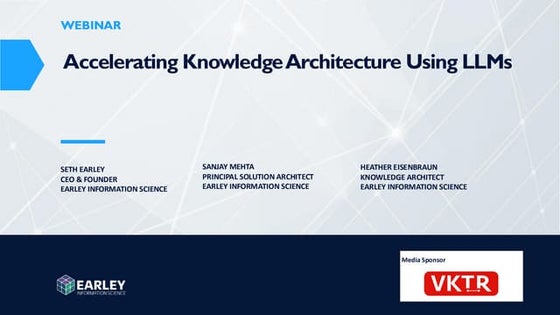



Revolutionizing Field Service: How LLMs Are Powering Smarter Knowledge Access...Earley Information Science
╠²
Revolutionizing Field Service with LLM-Powered Knowledge Management
Field service technicians need instant access to accurate repair information, but outdated knowledge systems often create frustrating delays. Large Language Models (LLMs) are changing the gameŌĆöenhancing knowledge retrieval, streamlining troubleshooting, and reducing technician dependency on senior staff.
In this webinar, Seth Earley and industry experts Sanjay Mehta, and Heather Eisenbraun explore how LLMs and Retrieval-Augmented Generation (RAG) are transforming field service operations. Discover how AI-powered knowledge management is improving efficiency, reducing downtime, and elevating service quality.
LLMs for Instant Knowledge Retrieval ŌĆō How AI-driven search dramatically cuts troubleshooting time.
Structured Data & AI ŌĆō Why high-quality, organized knowledge is essential for LLM success.
Real-World Implementation ŌĆō Lessons from deploying LLM-powered knowledge tools in field service.
Business Impact ŌĆō How AI reduces service delays, optimizes workflows, and enhances technician productivity.
Empower your field service teams with AI-driven knowledge access. Watch the webinar to see how LLMs are revolutionizing service efficiency.Quantum Computing Quick Research Guide by Arthur Morgan



Quantum Computing Quick Research Guide by Arthur MorganArthur Morgan
╠²
This is a Quick Research Guide (QRG).
QRGs include the following:
- A brief, high-level overview of the QRG topic.
- A milestone timeline for the QRG topic.
- Links to various free online resource materials to provide a deeper dive into the QRG topic.
- Conclusion and a recommendation for at least two books available in the SJPL system on the QRG topic.
QRGs planned for the series:
- Artificial Intelligence QRG
- Quantum Computing QRG
- Big Data Analytics QRG (coming 2025)
- Spacecraft Guidance, Navigation & Control QRG (coming 2026)
- UK Home Computing & The Birth of ARM QRG (coming 2027)
Any questions or comments?
- Please contact Arthur Morgan at art_morgan@att.net.
100% human made.Caching for Performance Masterclass: Caching at Scale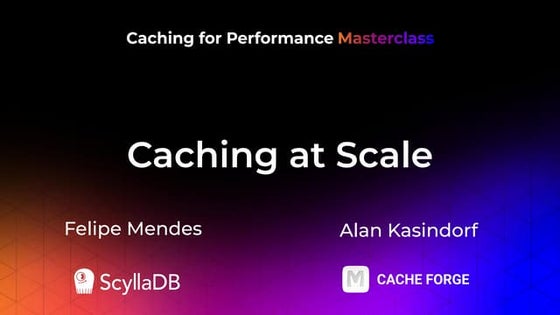



Caching for Performance Masterclass: Caching at ScaleScyllaDB
╠²
Weighing caching considerations for use cases with different technical requirements and growth expectations.
- Request coalescing
- Negative sharding
- Rate limiting
- Sharding and scalingTranscript: AI in publishing: Your questions answered - Tech Forum 2025



Transcript: AI in publishing: Your questions answered - Tech Forum 2025BookNet Canada
╠²
George Walkley, a publishing veteran and leading authority on AI applications, joins us for a follow-up to his presentation "Applying AI to publishing: A balanced and ethical approach". George gives a brief overview of developments since that presentation and answers attendees' pressing questions about AIŌĆÖs impact and potential applications in the book industry.
Link to recording and presentation slides: https://bnctechforum.ca/sessions/ai-in-publishing-your-questions-answered/
Presented by BookNet Canada on February 20, 2025 with support from the Department of Canadian Heritage.2025-02-27 Tech & Play_ Fun, UX, and Community.pdf



2025-02-27 Tech & Play_ Fun, UX, and Community.pdfkatalinjordans1
╠²
2025-02-27 Tech & Play_ Fun, UX, and Community.pdfTrustArc Webinar: State of State Privacy Laws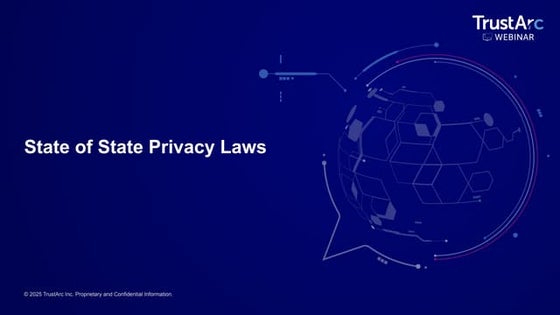



TrustArc Webinar: State of State Privacy LawsTrustArc
╠²
The U.S. data privacy landscape is rapidly proliferating, with 20 states enacting comprehensive privacy laws as of November 2024. These laws cover consumer rights, data collection and use including for sensitive data, data security, transparency, and various enforcement mechanisms and penalties for non-compliance.
Navigating this patchwork of state-level laws is crucial for businesses to ensure compliance and requires a combination of strategic planning, operational adjustments, and technology to be proactive.
Join leading experts from TrustArc, the Future of Privacy Forum, and Venable for an insightful webinar exploring the evolution of state data privacy laws and practical strategies to maintain compliance in 2025.
This webinar will review:
- A comprehensive overview of each stateŌĆÖs privacy regulations and the latest updates
- Practical considerations to help your business achieve regulatory compliance across multiple states
- Actionable insights to future-proof your business for 2025THE BIG TEN BIOPHARMACEUTICAL MNCs: GLOBAL CAPABILITY CENTERS IN INDIA



THE BIG TEN BIOPHARMACEUTICAL MNCs: GLOBAL CAPABILITY CENTERS IN INDIASrivaanchi Nathan
╠²
This business intelligence report, "The Big Ten Biopharmaceutical MNCs: Global Capability Centers in India", provides an in-depth analysis of the operations and contributions of the Global Capability Centers (GCCs) of ten leading biopharmaceutical multinational corporations in India. The report covers AstraZeneca, Bayer, Bristol Myers Squibb, GlaxoSmithKline (GSK), Novartis, Sanofi, Roche, Pfizer, Novo Nordisk, and Eli Lilly. In this report each company's GCC is profiled with details on location, workforce size, investment, and the strategic roles these centers play in global business operations, research and development, and information technology and digital innovation.Big Data Analytics Quick Research Guide by Arthur Morgan (PREVIEW)



Big Data Analytics Quick Research Guide by Arthur Morgan (PREVIEW)Arthur Morgan
╠²
This is a Quick Research Guide (QRG).
QRGs include the following:
- A brief, high-level overview of the QRG topic.
- A milestone timeline for the QRG topic.
- Links to various free online resource materials to provide a deeper dive into the QRG topic.
- Conclusion and a recommendation for at least two books available in the SJPL system on the QRG topic.
QRGs planned for the series:
- Artificial Intelligence QRG
- Quantum Computing QRG
- Big Data Analytics QRG (coming 2025)
- Spacecraft Guidance, Navigation & Control QRG (coming 2026)
- UK Home Computing & The Birth of ARM QRG (coming 2027)
Any questions or comments?
- Please contact Arthur Morgan at art_morgan@att.net.
100% human made.What is FinTech A Complete Guide to Financial Technology.pdf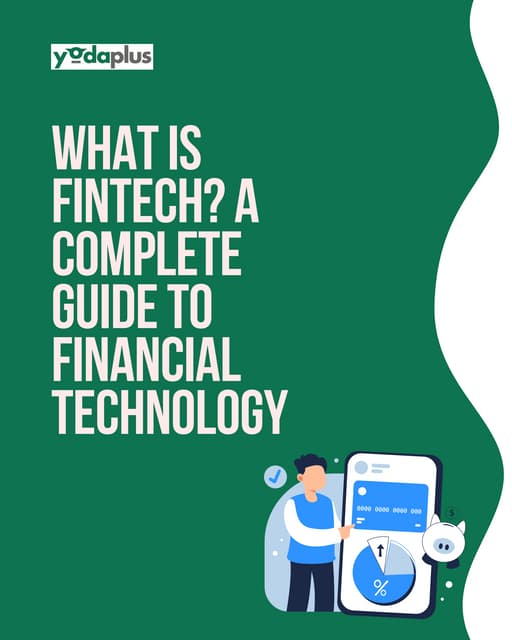



What is FinTech A Complete Guide to Financial Technology.pdf Yodaplus Technologies Private Limited
╠²
It is an in-depth exploration of how technology is transforming the financial sector. Covering the evolution of FinTech from credit cards to AI-driven banking, this guide explains key innovations such as blockchain, DeFi, AI-powered assistants, and central bank digital currencies (CBDCs). Learn how FinTech is enhancing banking, lending, and payments through automation, data analytics, and decentralized solutions. Whether you're a financial professional or just curious about the future of digital finance, this guide offers valuable insights into the rapidly evolving FinTech landscape.Data-Driven Public Safety: Reliable Data When Every Second Counts



Data-Driven Public Safety: Reliable Data When Every Second CountsSafe Software
╠²
When every second counts, you need access to data you can trust. In this webinar, weŌĆÖll explore how FME empowers public safety services to streamline their operations and safeguard communities. This session will showcase workflow examples that public safety teams leverage every day.
WeŌĆÖll cover real-world use cases and demo workflows, including:
Automating Police Traffic Stop Compliance: Learn how the City of Fremont meets traffic stop data standards by automating QA/QC processes, generating error reports ŌĆō saving over 2,800 hours annually on manual tasks.
Anonymizing Crime Data: Discover how cities protect citizen privacy while enabling transparent and trustworthy open data sharing.
Next Gen 9-1-1 Integration: Explore how Santa Clara County supports the transition to digital emergency response systems for faster, more accurate dispatching, including automated schema mapping for address standardization.
Extreme Heat Alerts: See how FME supports disaster risk management by automating the delivery of extreme heat alerts for proactive emergency response.
Our goal is to provide practical workflows and actionable steps you can implement right away. Plus, weŌĆÖll provide quick steps to find more information about our public safety subscription for Police, Fire Departments, EMS, HAZMAT teams, and more.
Whether youŌĆÖre in a call center, on the ground, or managing operations, this webinar is crafted to help you leverage data to make informed, timely decisions that matter most.Caching for Performance Masterclass: Caching Strategies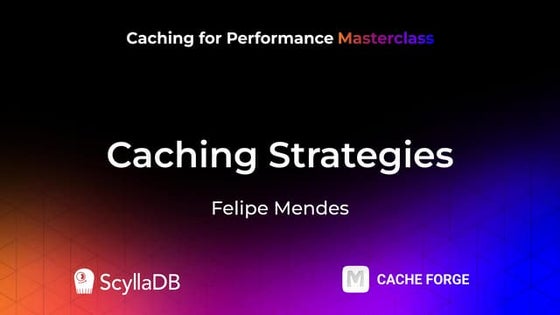



Caching for Performance Masterclass: Caching StrategiesScyllaDB
╠²
Exploring the tradeoffs of common caching strategies ŌĆō and a look at the architectural differences.
- Which strategies exist
- When to apply different strategies
- ScyllaDB cache designAI Trends and Fun Demos ŌĆō SothebyŌĆÖs Rehoboth Presentation



AI Trends and Fun Demos ŌĆō SothebyŌĆÖs Rehoboth PresentationEthan Holland
╠²
Ethan B. Holland explores the impact of artificial intelligence on real estate and digital transformation. Covering key AI trends such as multimodal AI, agency, co-pilots, and AI-powered computer usage, the document highlights how emerging technologies are reshaping industries. It includes real-world demonstrations of AI in action, from automated real estate insights to AI-generated voice and video applications. With expertise in digital transformation, Ethan shares insights from his work optimizing workflows with AI tools, automation, and large language models. This presentation is essential for professionals seeking to understand AIŌĆÖs role in business, automation, and real estate.
More Related Content
Similar to KDD Cup 2013 Track 1 - Author - Paper Identification challenge (2nd place team) (8)
User intent formalization AIware 2024.pdf



User intent formalization AIware 2024.pdfshuvendulahiri1
╠²
║▌║▌▀Żs for AIware 2024 conference invited Industry perspective talkAINL 2016: Bastrakova, Ledesma, Millan, Zighed



AINL 2016: Bastrakova, Ledesma, Millan, ZighedLidia Pivovarova
╠²
This document presents a method for author disambiguation using relational machine learning. It uses a two step validation process applying hierarchical clustering and machine learning models. In the first step, signatures are clustered based on complementing features like focus name, LDA topic and ethnicity. In the second step, machine learning models like random forest, gradient boosting and logistic regression are applied to pairs of signatures to validate the clustering. The best performing model was found to be logistic regression, achieving an F1 score of 98.6% on the first validation and 84.85% on the second validation. Referenced journals distance was the most important feature, followed by author initials. The method provides an effective and scalable way to automatically disambiguate authorsBack to FME School - Day 1: Your Data and FME



Back to FME School - Day 1: Your Data and FMESafe Software
╠²
ItŌĆÖs that time of year. The season is changing and FME ŌĆśschoolŌĆÖ is now in session! Join us for a series of 9 mini-talks to learn the latest tips for data transformation, see live demos, and get your FME questions answered. Registration gives you access for all three days ŌĆö sign up now to tune in to the talks youŌĆÖre most interested in.
Course Schedule ŌĆō Day 1: Your Data and FME
8:00am ŌĆō FME Workbench Performance Tips & Tricks
8:40am ŌĆō A Database for Every Occasion
9:20am ŌĆō Working with Attributes in FMEAuthor paper identification problem final presentation



Author paper identification problem final presentationPooja Mishra
╠²
This document describes an author paper identification problem where the goal is to determine the correct author for a given paper from a dataset of author information. It discusses preprocessing the data to clean issues and extract relevant features. Random forest and gradient boost models are built and evaluated on test data to solve the problem. Key steps taken include data cleaning, feature engineering from the paper, author and paper-author data, model building using Weka, Mahout and H2O, and evaluating the results using mean average precision.Multi-label graph analysis and computations using GraphX



Multi-label graph analysis and computations using GraphXQingbo Hu
╠²
The slides used in the session of "Multi-label graph analysis and computations using GraphX" in Spark Summit 2017.Progressive f# tutorials nyc dmitry mozorov & jack pappas on code quotations ...



Progressive f# tutorials nyc dmitry mozorov & jack pappas on code quotations ...Skills Matter
╠²
Code Quotations: Code-as-Data for F#
This tutorial will cover F# Code Quotations in-depth. You'll learn what Code Quotations are, how to use them, and where to apply them in your applications. We'll work through several real-world examples to highlight the important features -- and potential pitfalls -- of Code Quotations.
F# and the DLR



F# and the DLRRichard Minerich
╠²
The document discusses F# and the Dynamic Language Runtime (DLR). It provides an overview of F# as a functional-first multi-paradigm language for .NET that allows for imperative and object-oriented programming. It also describes the DLR and how it enables dynamic languages like Python and Ruby to run on .NET and interoperate with existing .NET code. The DLR architecture is explained along with use cases like test-driven development, web development, and embedding dynamic languages in applications.Understanding Hadoop through examples



Understanding Hadoop through examplesYoshitomo Matsubara
╠²
The document introduces Hadoop and MapReduce concepts through two examples - word count and quiz grading. It provides code samples for mappers and reducers to count word frequencies and calculate student quiz scores in Hadoop. Readers are instructed to run the example code locally to understand how Hadoop partitions and processes large datasets in parallel using a map-reduce model. The goal is for readers to intuitively grasp Hadoop functionality and be able to write their own map-reduce programs for other problems.Recently uploaded (20)
Revolutionizing Field Service: How LLMs Are Powering Smarter Knowledge Access...



Revolutionizing Field Service: How LLMs Are Powering Smarter Knowledge Access...Earley Information Science
╠²
Revolutionizing Field Service with LLM-Powered Knowledge Management
Field service technicians need instant access to accurate repair information, but outdated knowledge systems often create frustrating delays. Large Language Models (LLMs) are changing the gameŌĆöenhancing knowledge retrieval, streamlining troubleshooting, and reducing technician dependency on senior staff.
In this webinar, Seth Earley and industry experts Sanjay Mehta, and Heather Eisenbraun explore how LLMs and Retrieval-Augmented Generation (RAG) are transforming field service operations. Discover how AI-powered knowledge management is improving efficiency, reducing downtime, and elevating service quality.
LLMs for Instant Knowledge Retrieval ŌĆō How AI-driven search dramatically cuts troubleshooting time.
Structured Data & AI ŌĆō Why high-quality, organized knowledge is essential for LLM success.
Real-World Implementation ŌĆō Lessons from deploying LLM-powered knowledge tools in field service.
Business Impact ŌĆō How AI reduces service delays, optimizes workflows, and enhances technician productivity.
Empower your field service teams with AI-driven knowledge access. Watch the webinar to see how LLMs are revolutionizing service efficiency.Quantum Computing Quick Research Guide by Arthur Morgan



Quantum Computing Quick Research Guide by Arthur MorganArthur Morgan
╠²
This is a Quick Research Guide (QRG).
QRGs include the following:
- A brief, high-level overview of the QRG topic.
- A milestone timeline for the QRG topic.
- Links to various free online resource materials to provide a deeper dive into the QRG topic.
- Conclusion and a recommendation for at least two books available in the SJPL system on the QRG topic.
QRGs planned for the series:
- Artificial Intelligence QRG
- Quantum Computing QRG
- Big Data Analytics QRG (coming 2025)
- Spacecraft Guidance, Navigation & Control QRG (coming 2026)
- UK Home Computing & The Birth of ARM QRG (coming 2027)
Any questions or comments?
- Please contact Arthur Morgan at art_morgan@att.net.
100% human made.Caching for Performance Masterclass: Caching at Scale



Caching for Performance Masterclass: Caching at ScaleScyllaDB
╠²
Weighing caching considerations for use cases with different technical requirements and growth expectations.
- Request coalescing
- Negative sharding
- Rate limiting
- Sharding and scalingTranscript: AI in publishing: Your questions answered - Tech Forum 2025



Transcript: AI in publishing: Your questions answered - Tech Forum 2025BookNet Canada
╠²
George Walkley, a publishing veteran and leading authority on AI applications, joins us for a follow-up to his presentation "Applying AI to publishing: A balanced and ethical approach". George gives a brief overview of developments since that presentation and answers attendees' pressing questions about AIŌĆÖs impact and potential applications in the book industry.
Link to recording and presentation slides: https://bnctechforum.ca/sessions/ai-in-publishing-your-questions-answered/
Presented by BookNet Canada on February 20, 2025 with support from the Department of Canadian Heritage.2025-02-27 Tech & Play_ Fun, UX, and Community.pdf



2025-02-27 Tech & Play_ Fun, UX, and Community.pdfkatalinjordans1
╠²
2025-02-27 Tech & Play_ Fun, UX, and Community.pdfTrustArc Webinar: State of State Privacy Laws



TrustArc Webinar: State of State Privacy LawsTrustArc
╠²
The U.S. data privacy landscape is rapidly proliferating, with 20 states enacting comprehensive privacy laws as of November 2024. These laws cover consumer rights, data collection and use including for sensitive data, data security, transparency, and various enforcement mechanisms and penalties for non-compliance.
Navigating this patchwork of state-level laws is crucial for businesses to ensure compliance and requires a combination of strategic planning, operational adjustments, and technology to be proactive.
Join leading experts from TrustArc, the Future of Privacy Forum, and Venable for an insightful webinar exploring the evolution of state data privacy laws and practical strategies to maintain compliance in 2025.
This webinar will review:
- A comprehensive overview of each stateŌĆÖs privacy regulations and the latest updates
- Practical considerations to help your business achieve regulatory compliance across multiple states
- Actionable insights to future-proof your business for 2025THE BIG TEN BIOPHARMACEUTICAL MNCs: GLOBAL CAPABILITY CENTERS IN INDIA



THE BIG TEN BIOPHARMACEUTICAL MNCs: GLOBAL CAPABILITY CENTERS IN INDIASrivaanchi Nathan
╠²
This business intelligence report, "The Big Ten Biopharmaceutical MNCs: Global Capability Centers in India", provides an in-depth analysis of the operations and contributions of the Global Capability Centers (GCCs) of ten leading biopharmaceutical multinational corporations in India. The report covers AstraZeneca, Bayer, Bristol Myers Squibb, GlaxoSmithKline (GSK), Novartis, Sanofi, Roche, Pfizer, Novo Nordisk, and Eli Lilly. In this report each company's GCC is profiled with details on location, workforce size, investment, and the strategic roles these centers play in global business operations, research and development, and information technology and digital innovation.Big Data Analytics Quick Research Guide by Arthur Morgan (PREVIEW)



Big Data Analytics Quick Research Guide by Arthur Morgan (PREVIEW)Arthur Morgan
╠²
This is a Quick Research Guide (QRG).
QRGs include the following:
- A brief, high-level overview of the QRG topic.
- A milestone timeline for the QRG topic.
- Links to various free online resource materials to provide a deeper dive into the QRG topic.
- Conclusion and a recommendation for at least two books available in the SJPL system on the QRG topic.
QRGs planned for the series:
- Artificial Intelligence QRG
- Quantum Computing QRG
- Big Data Analytics QRG (coming 2025)
- Spacecraft Guidance, Navigation & Control QRG (coming 2026)
- UK Home Computing & The Birth of ARM QRG (coming 2027)
Any questions or comments?
- Please contact Arthur Morgan at art_morgan@att.net.
100% human made.What is FinTech A Complete Guide to Financial Technology.pdf



What is FinTech A Complete Guide to Financial Technology.pdf Yodaplus Technologies Private Limited
╠²
It is an in-depth exploration of how technology is transforming the financial sector. Covering the evolution of FinTech from credit cards to AI-driven banking, this guide explains key innovations such as blockchain, DeFi, AI-powered assistants, and central bank digital currencies (CBDCs). Learn how FinTech is enhancing banking, lending, and payments through automation, data analytics, and decentralized solutions. Whether you're a financial professional or just curious about the future of digital finance, this guide offers valuable insights into the rapidly evolving FinTech landscape.Data-Driven Public Safety: Reliable Data When Every Second Counts



Data-Driven Public Safety: Reliable Data When Every Second CountsSafe Software
╠²
When every second counts, you need access to data you can trust. In this webinar, weŌĆÖll explore how FME empowers public safety services to streamline their operations and safeguard communities. This session will showcase workflow examples that public safety teams leverage every day.
WeŌĆÖll cover real-world use cases and demo workflows, including:
Automating Police Traffic Stop Compliance: Learn how the City of Fremont meets traffic stop data standards by automating QA/QC processes, generating error reports ŌĆō saving over 2,800 hours annually on manual tasks.
Anonymizing Crime Data: Discover how cities protect citizen privacy while enabling transparent and trustworthy open data sharing.
Next Gen 9-1-1 Integration: Explore how Santa Clara County supports the transition to digital emergency response systems for faster, more accurate dispatching, including automated schema mapping for address standardization.
Extreme Heat Alerts: See how FME supports disaster risk management by automating the delivery of extreme heat alerts for proactive emergency response.
Our goal is to provide practical workflows and actionable steps you can implement right away. Plus, weŌĆÖll provide quick steps to find more information about our public safety subscription for Police, Fire Departments, EMS, HAZMAT teams, and more.
Whether youŌĆÖre in a call center, on the ground, or managing operations, this webinar is crafted to help you leverage data to make informed, timely decisions that matter most.Caching for Performance Masterclass: Caching Strategies



Caching for Performance Masterclass: Caching StrategiesScyllaDB
╠²
Exploring the tradeoffs of common caching strategies ŌĆō and a look at the architectural differences.
- Which strategies exist
- When to apply different strategies
- ScyllaDB cache designAI Trends and Fun Demos ŌĆō SothebyŌĆÖs Rehoboth Presentation



AI Trends and Fun Demos ŌĆō SothebyŌĆÖs Rehoboth PresentationEthan Holland
╠²
Ethan B. Holland explores the impact of artificial intelligence on real estate and digital transformation. Covering key AI trends such as multimodal AI, agency, co-pilots, and AI-powered computer usage, the document highlights how emerging technologies are reshaping industries. It includes real-world demonstrations of AI in action, from automated real estate insights to AI-generated voice and video applications. With expertise in digital transformation, Ethan shares insights from his work optimizing workflows with AI tools, automation, and large language models. This presentation is essential for professionals seeking to understand AIŌĆÖs role in business, automation, and real estate.
10 FinTech Solutions Every Business Should Know!.pdf



10 FinTech Solutions Every Business Should Know!.pdf Yodaplus Technologies Private Limited
╠²
FinTech is reshaping the way businesses handle payments, risk management, and financial operations. From AI-driven fraud detection to blockchain-powered security, the right FinTech solutions can streamline processes, reduce costs, and improve decision-making. This guide explores 10 essential FinTech tools that help businesses stay ahead in an increasingly digital economy.
Discover how digital payments, credit risk management, treasury solutions, AI, blockchain, and RegTech can enhance efficiency, security, and profitability.
Read now to learn how businesses are leveraging FinTech for smarter financial management!UiPath Automation Developer Associate Training Series 2025 - Session 1



UiPath Automation Developer Associate Training Series 2025 - Session 1DianaGray10
╠²
Welcome to UiPath Automation Developer Associate Training Series 2025 - Session 1.
In this session, we will cover the following topics:
Introduction to RPA & UiPath Studio
Overview of RPA and its applications
Introduction to UiPath Studio
Variables & Data Types
Control Flows
You are requested to finish the following self-paced training for this session:
Variables, Constants and Arguments in Studio 2 modules - 1h 30m - https://academy.uipath.com/courses/variables-constants-and-arguments-in-studio
Control Flow in Studio 2 modules - 2h 15m - https:/academy.uipath.com/courses/control-flow-in-studio
Ōüē’ĖÅ For any questions you may have, please use the dedicated Forum thread. You can tag the hosts and mentors directly and they will reply as soon as possible. GDG Cloud Southlake #40: Brandon Stokes: How to Build a Great Product



GDG Cloud Southlake #40: Brandon Stokes: How to Build a Great ProductJames Anderson
╠²
How to Build a Great Product
Being a tech entrepreneur is about providing a remarkable product or service that serves the needs of its customers better, faster, and cheaper than anything else. The goal is to "make something people want" which we call, product market fit.
But how do we get there? We'll explore the process of taking an idea to product market fit (PMF), how you know you have true PMF, and how your product strategies differ pre-PMF from post-PMF.
Brandon is a 3x founder, 1x exit, ex-banker & corporate strategist, car dealership owner, and alumnus of Techstars & Y Combinator. He enjoys building products and services that impact people for the better.
Brandon has had 3 different careers (banking, corporate finance & strategy, technology) in 7 different industries; Investment Banking, CPG, Media & Entertainment, Telecommunications, Consumer application, Automotive, & Fintech/Insuretech.
He's an idea to revenue leader and entrepreneur that helps organizations build products and processes, hire talent, test & iterate quickly, collect feedback, and grow in unregulated and heavily regulated industries.Caching for Performance Masterclass: The In-Memory Datastore



Caching for Performance Masterclass: The In-Memory DatastoreScyllaDB
╠²
Understanding where in-memory data stores help most and where teams get into trouble.
- Where in the stack to cache
- Memcached as a tool
- Modern cache primitivesUiPath Automation Developer Associate Training Series 2025 - Session 1



UiPath Automation Developer Associate Training Series 2025 - Session 1DianaGray10
╠²
Welcome to UiPath Automation Developer Associate Training Series 2025 - Session 1.
In this session, we will cover the following topics:
Introduction to RPA & UiPath Studio
Overview of RPA and its applications
Introduction to UiPath Studio
Variables & Data Types
Control Flows
You are requested to finish the following self-paced training for this session:
Variables, Constants and Arguments in Studio 2 modules - 1h 30m - https://academy.uipath.com/courses/variables-constants-and-arguments-in-studio
Control Flow in Studio 2 modules - 2h 15m - https:/academy.uipath.com/courses/control-flow-in-studio
Ōüē’ĖÅ For any questions you may have, please use the dedicated Forum thread. You can tag the hosts and mentors directly and they will reply as soon as possible. Blockchain for Businesses Practical Use Cases & Benefits.pdf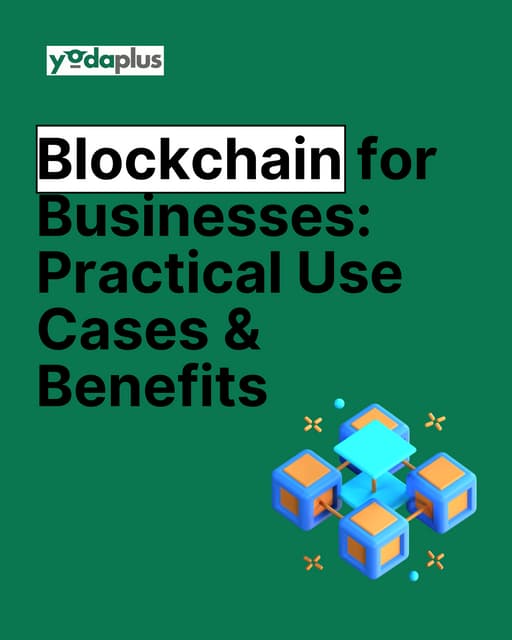



Blockchain for Businesses Practical Use Cases & Benefits.pdf Yodaplus Technologies Private Limited
╠²
Blockchain is revolutionizing industries by enhancing security, transparency, and automation. From supply chain management and finance to healthcare and real estate, blockchain eliminates inefficiencies, prevents fraud, and streamlines operations.
What You'll Learn in This Presentation:
1. How blockchain enables real-time tracking & fraud prevention
2. The impact of smart contracts & decentralized finance (DeFi)
3. Why businesses should adopt secure and automated blockchain solutions
4. Real-world blockchain applications across multiple industries
Explore the future of blockchain and its practical benefits for businesses!Revolutionizing Field Service: How LLMs Are Powering Smarter Knowledge Access...



Revolutionizing Field Service: How LLMs Are Powering Smarter Knowledge Access...Earley Information Science
╠²
What is FinTech A Complete Guide to Financial Technology.pdf



What is FinTech A Complete Guide to Financial Technology.pdf Yodaplus Technologies Private Limited
╠²
Blockchain for Businesses Practical Use Cases & Benefits.pdf



Blockchain for Businesses Practical Use Cases & Benefits.pdf Yodaplus Technologies Private Limited
╠²
KDD Cup 2013 Track 1 - Author - Paper Identification challenge (2nd place team)
- 1. KDD Cup 2013 Author ŌĆō Paper Identification Challenge (2nd place team) Dmitry Efimov Lucas Silva Benjamin Solecki
- 2. Approach summary Goal: find incorrectly assigned pairs author-paper Supervised machine learning problem with binary response Deep feature engineering (> 300 features) Gradient Boosting Machine (package gbm in R)
- 3. Author ŌĆō Paper graph
- 4. Author features count journals tf-idf measure Count features NLP features Multiple source features authorŌĆÖs duplicates
- 5. Paper features Count features NLP features Multiple source features Additional features count keywords tf-idf measure paperŌĆÖs duplicates reverse features engineering
- 6. Author ŌĆō paper features (1 of 4) Count features Multiple source features Additional features Likelihood features
- 7. Author ŌĆō paper features (2 of 4) Count features Additional features count of coauthors with the same affiliation reverse feature engineering: year ranking feature
- 8. Author ŌĆō paper features (3 of 4) Multiple source features how many times pair author-paper appeared in the Microsoft database?
- 9. Author ŌĆō paper features (4 of 4) Likelihood features use Lj and Lja as features 1) use (╬▒ŌłÖ Lj + (1ŌłÆ╬▒)ŌłÖ Lja) as feature (shrunken likelihood); 2) mixed-effects models (package lme4 in R) to find ╬▒ Lj ŌĆō likelihood by journal Lja ŌĆō likelihood by journal and author
- 10. Model Gradient Boosting Machine (package gbm in R) Grid search for the set of parameters 83 features in the final model (out of 300 calculated features )
- 11. Result and conclusion ŌĆó Our MAP score is 0.98144 (the winning submission score is 0.98259). ŌĆó Many algorithms (LambdaRank, LambdaMART, RankBoost) based on MAP optimization gave less MAP score than GBM with Bernoulli distribution. ŌĆó The idea of feature classification based on bipartite author-paper graph is very promising. Analyzing of graph topology can give ideas for new features.
- 12. Thank you!


